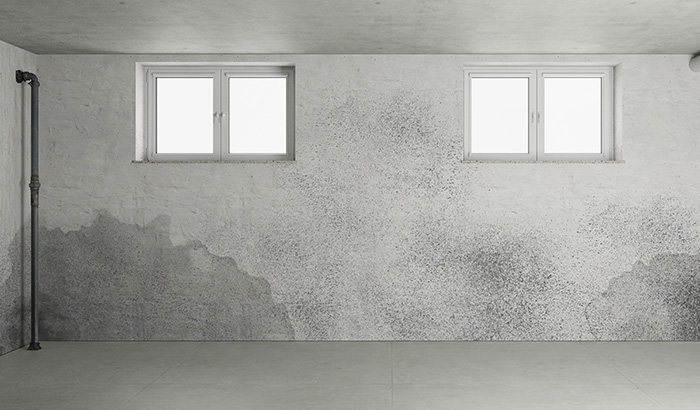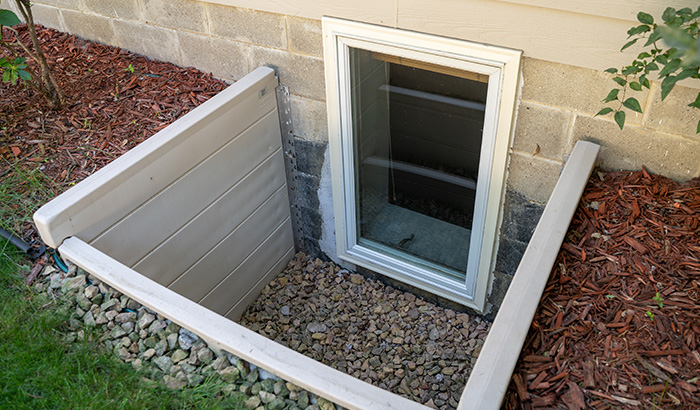Keeping your basement safe is a top priority for most homeowners, whether it’s a finished space or somewhere you use as storage. There are a lot of hazards that can present a danger to the portion of your home that sits below ground, but water and flooding is the primary concern. Here’s a look at how to best protect your lowest floor from water and other dangers.
1. Check Your Downspouts
Most roofs have gutters with downspouts that run from the roof down toward the ground. And as long as they are properly connected and positioned, they shouldn’t be a source of concern for water entering your basement. If they get displaced or come disconnected, though, they can become a major headache. Water running from your gutter through a poorly positioned downspout can pool around your foundation and cause cracks, water leaks, and other damage.
Check your downspouts annually to prevent this from happening. Ensure that they are connected to the drainpipe, that the bottom is directed away from your foundation, and that the water is diverted at least five feet away from your home.
2. Monitor Your Basement for Moisture
Flooding is the most disastrous when it’s not caught right away, so regularly monitor things downstairs. Check for moisture, leaks, or mold growth, especially during periods of heavy rain and snow. Even sprinklers can be the cause of a flood, so keep an eye on things so you can take action quickly if you notice anything out of the ordinary. Pay attention to window sills and the walls under and around the windows since that is the most likely point of water entry.
3. Check Your Sump Pump
Not every home has a sump pump, but those with levels below grade or in areas with high water tables typically do. A sump pump is a device that keeps moisture out and minimizes the risk of flooding in a home. If you’re not sure if your home has a sump pump or not, simply go downstairs and look for one. It’s usually located at the lowest part of your home’s bottom floor, in a pit beneath the floor’s surface. There will be a pipe that runs from the pump to the exterior of your home, or that connects to the sewer line.
Once you locate your sump pump, check to make sure it’s operating properly. You can learn more about that process here. While you’re at it, clean your pump’s strainer screen so you can prevent any future clogging.
4. Make Sure It’s Graded Properly
One of the biggest factors in home flooding is grading. If your yard slopes toward your foundation, you’ve got trouble. That will bring water running straight to your home anytime it rains. Instead, the ground should be sloped away from your foundation so the water flows away and not toward your home. Proper grading is a minimum of half an inch per foot over the first ten feet away from your home. Grading can be tricky, so if your yard looks like it’s not graded correctly, it might be best to call a landscape professional to help you get things sorted out.
5. Install a Water Leak Detector
Certain areas of your home are at high risk of becoming the source of a flood. These areas include windows, room corners, sump pumps, water heaters, boilers, dishwashers, and washing machines. One way to help notify you immediately if there is water entering your home is to install a water leak detecting device. These devices range from simple audio alerts to more sophisticated detectors that alert your cellular device or home security system, and they’re generally easy to install near hazardous areas.
6. Avoid Storing Items in Cardboard
Cardboard boxes have a lot of uses, but storing your belongings downstairs in cardboard should be avoided. It is highly absorbent and can quickly attract mold and pests when it gets wet. Hopefully, you don’t have any flooding problems, but if you do, anything stored in a cardboard box is likely to suffer significant damage. Store items in plastic bins instead. It’s a much better long-term storage solution.
7. Clean Out Your Window Wells
Any downstairs windows that are below grade need to have a window well installed. Window wells help keep water away from your foundation when they are working correctly. But problems can arise when these areas become clogged with leaves and other debris. Clean them out twice a year: once in the spring and again in the fall. Additionally, check to make sure that the sides of your window well remain sealed to the foundation on the sides of your windows. This will help with drainage and make sure your home is safe from water damage.
8. Cover Your Window Wells
Even if your window wells are clear of debris, heavy rains and snow can still present a problem. Window well covers are an easy way to keep the moisture away from your window wells so that flooding is less of a concern. You can find window well covers in a variety of standard sizes and shapes, as well as ones that are custom built to your home’s specifications. Installing covers on all of your window wells will help divert water and stop it from seeping into the ground around your home’s foundation.
Windowell Expressions is Here to Help
Keeping your basement safe from flooding and other hazards might seem like a lot of work, but Windowell Expressions is here to help. We build custom window well covers that will keep the water out while still allowing in the light and sunshine.
We also offer decorative foundation and window well liners, adjustable window well grates, and more to keep your property looking top-notch. We’re always happy to customize well covers to fit your specific needs, but we offer standard sizes as well.
We operate from Salt Lake City, Utah, and serve customers across the Wasatch Front. See what Windowell Expressions can do for you. Get a free quote today!







